- Home
- Richard Dawkins
Brief Candle in the Dark
Brief Candle in the Dark Read online
DEDICATION
For Lalla
‘Out, out, brief candle: Life’s but a walking shadow, a poor player, that struts and frets his hour upon the stage and then is heard no more . . .’
William Shakespeare, Macbeth, Act V, scene v
‘Science as a candle in the dark’
Carl Sagan, subtitle to The Demon-haunted World (1995)
‘Better to light a candle than curse the darkness’
Anon.
CONTENTS
Dedication
Flashback at a feast
Oh, the things that are done by a don
Lore of the jungle
Go to the wasp, thou sluggard: evolutionary economics
The delegate’s tale
Christmas Lectures
Islands of the blest
Whoso findeth a publisher findeth a good thing
Television
Debates and encounters
Simonyi Professor
Unweaving the threads from a scientist’s loom The Taxicab Theory of Evolution
Extending the phenotype
Action at a distance
Rediscovering the organism: passengers and stowaways
Aftermaths to The Extended Phenotype
Constraints on perfection
The Darwinian engineer in the classroom
‘The Genetic Book of the Dead’ and the species as ‘averaging computer’
Evolution in pixels
The evolution of evolvability
Kaleidoscopic embryos
Arthromorphs
The cooperative gene
Universal Darwinism
Memes
Chinese junk and Chinese Whispers
Models of the world
The argument from personal incredulity
The God delusion
Full circle
Acknowledgements
Picture acknowledgements
Index
Photo section
About the author
Also by Richard Dawkins
Credits
Copyright
About the publisher
FLASHBACK AT A FEAST
WHAT am I doing here in New College Hall, about to read my poem to a hundred dinner guests? How did I get here – a subjective 25-year-old, objectively bewildered to find himself celebrating his seventieth circuit of the sun? Looking around the long candlelit table with its polished silver and sparkling wineglasses, reflecting flashes of wit and sparkling sentences, I indulge my mind in a series of quick-firing flashbacks.
Back to childhood in colonial Africa amid big, lazy butterflies; the peppery taste of nasturtium leaves stolen from the lost Lilongwe garden; the taste of mango, more than sweet, spiced by a whiff of turpentine and sulphur; boarding school in the pine-scented Vumba mountains of Zimbabwe, and then, back ‘home’ in England, beneath the heavenward spires of Salisbury and Oundle; undergraduate days damsel-dreaming among Oxford’s punts and spires, and the dawning of an interest in science and the deep philosophical questions which only science can answer; early forays into research and teaching at Oxford and Berkeley; the return to Oxford as an eager young lecturer; more research (mostly collaborating with my first wife Marian, whom I can see at the table here in New College), and then my first book, The Selfish Gene. Those swift memories take me to the age of thirty-five, halfway to today’s landmark birthday. They milestone the years covered by my first book of memoirs, An Appetite for Wonder.
My thirty-fifth birthday recalled to me an article by the humorist Alan Coren about his own. Coren was mock-depressed by the thought that he had reached half-time and it was now downhill all the way. I didn’t feel the same, perhaps because I was just putting the finishing touches to my first, rather youthful book and was looking forward to publication and its aftermath.
One aspect of that aftermath was being pitchforked by the unexpectedly high sales of the book into the company of those who are regularly asked, by journalists scratching around for column inches, to list their ideal gathering of dinner-party guests. In the days when I used to respond to that kind of request I would invite some great scientists as a matter of course, but also writers and creative spirits of all kinds. Indeed, any of those lists would probably have included at least fifteen of those actually attending my birthday dinner today, among them novelists, playwrights, television personalities, musicians, comedians, historians, publishers, actors and multinational business tycoons.
Thirty-five years ago, I think to myself as I spot familiar faces around the table, such a mix of literary and artistic guests at a scientist’s birthday dinner would have seemed unlikely. Has the Zeitgeist changed since C. P. Snow lamented the chasm between scientific and literary culture? What has happened in the years covered by my dinnertime musing? My reverie jumps me into the middle of the period and I conjure the giant, unforgettable figure of Douglas Adams, sadly absent from the feast. In 1996, when I was fifty-five and he ten years younger, I had a televised conversation with him for a Channel Four documentary called Break the Science Barrier. The programme’s purpose was precisely to show that science needed to burst into the wider culture, and my interview with Douglas was the high spot. Here is part of what he said:
I think the role of the novel has changed a little bit. In the nineteenth century, the novel was where you went to get your serious reflections and questionings about life. You’d go to Tolstoy and Dostoyevsky. Nowadays, of course, you know the scientists actually tell much more about such issues than you would ever get from novelists. So I think that for the real solid red meat of what I read I go to science books, and read some novels for light relief.
Could this be a part of what has changed? Have novelists, journalists and others of the kind C. P. Snow would have planted firmly in his first culture increasingly come to embrace the second? Might Douglas, if he were still living, now go back to the novel and uncover some of what he had moved to science to find, twenty-five years after he read English at Cambridge: Ian McEwan, say, or A. S. Byatt? Or other novelists who love science, such as Philip Pullman or Martin Amis, William Boyd or Barbara Kingsolver? Then there are highly successful science-inspired plays, in the tradition of Tom Stoppard and Michael Frayn. Could this starry dinner party, put together for me by my wife Lalla Ward, an artist and actress herself well read in science, be some kind of symbol of a change in the culture – as well as a personal landmark in my life? Are we witnessing a constructive merger between scientific and literary cultures, perhaps the ‘third’ culture towards which my literary agent John Brockman has been working behind the scenes as he nurses his online salon and grows his glittering list of science authors? Or the merging of cultures that I aspired to in my own Unweaving the Rainbow where, under the influence of Lalla, I tried to reach out to the world of literature and bridge the gap from science? Où sont les C. P. Snows d’antan?
Two anecdotes tell (and if you don’t like digressive anecdotes you might find you’re reading the wrong book). One of my guests at this New College dinner, the explorer and adventurer Redmond O’Hanlon, author of grotesquely funny travel books such as Into the Heart of Borneo and In Trouble Again, would throw literary parties and dinners with his wife Belinda to which, it seemed, the whole of literary London was invited. Novelists and critics, journalists and editors, poets and publishers, literary agents and literary lions descended on their remote corner of the Oxfordshire countryside, the house crammed full of stuffed snakes, shrunken heads, leathery corpses and leather-bound books, exotic curios of anthropology and – one suspects – anthropophagy. These evenings were always notable for the company and, when it included Salman Rushdie, for the bodyguards keeping their own company upstairs.
On one of
these occasions, Lalla and I happened to have staying with us Nathan Myhrvold, Chief Technology Officer at Microsoft and one of the most inventive geeks of Silicon Valley. Nathan is a mathematical physicist by training. After his PhD at Princeton he worked in Cambridge with Stephen Hawking during the period when Stephen was still just capable of talking, though not intelligibly to any but his close associates, who acted as interpreters for the benefit of the rest of the world. Nathan became one of these highly qualified physicist amanuenses. True to his promise, he is now one of high tech’s most innovative thinkers. When Redmond and Belinda invited us we told them we had a house guest and they, hospitable as ever, told us to bring him along.
Nathan is too polite to monopolize a conversation. His neighbours at the long table presumably asked him what he did, and the conversation grew into a discussion of string theory and other arcana of modern physics. And the literary illuminati were held spellbound. They began as usual, no doubt, exchanging aphoristic wit with their neighbours. But inexorably a wave of curious interest in science swept from Nathan’s end down the long table, and the evening became a kind of informal seminar on the weirdness of modern physics. When a seminar includes intelligences of the calibre of this bunch of dinner companions, interesting things happen. Lalla and I basked in reflected glory as sponsors of the unexpected guest at this archetypal ‘third culture’ evening. And afterwards Redmond telephoned and told Lalla that never, in all his years of throwing such parties, had he seen his eminent literary guests reduced to such stunned silence.
The second anecdote is almost a mirror image. The playwright and novelist Michael Frayn came, with his wife the distinguished writer Claire Tomalin, to stay with Lalla and me when his remarkable play Copenhagen was being performed at the Oxford Playhouse. The play is about the relationship between two giants of modern physics, Niels Bohr and Werner Heisenberg, and about a riddle in the history of science: why did Heisenberg visit Bohr in Copenhagen in 1941, and what was Heisenberg’s role in the war (see also page 283)? After the performance, Michael was conducted to an upper room in the Playhouse, where he was quizzed by the assembled physicists of Oxford. It was a privilege to hear this aristocrat of literary and philosophical learning field questions from the cream of Oxford scientists, including several fellows of the Royal Society. Once again, an evening for third culture warriors to treasure: an evening to surprise – and delight – the C. P. Snow of thirty years earlier.
I dare to hope that my books, starting with The Selfish Gene in 1976, are among those that changed the cultural landscape, along with the works of Stephen Hawking, Peter Atkins, Carl Sagan, Edward O. Wilson, Steve Jones, Stephen Jay Gould, Steven Pinker, Richard Fortey, Lawrence Krauss, Daniel Kahneman, Helena Cronin, Daniel Dennett, Brian Greene, the two M. Ridleys (Mark and Matt), the two Sean Carrolls (physicist and biologist), Victor Stenger and others, and the critical and journalistic buzz that they engendered. I’m not talking about science journalists explaining science to the lay public, although that’s a good thing as well. I’m talking about books by professional scientists, aimed at professionals in their own and other disciplines, but written in language such that the general reading public can look over their shoulders and join in. I’d like to think that I might have been one of those who helped to kick-start this ‘third culture’.
Unlike An Appetite for Wonder, this second volume of my autobiography is not simply chronological, not even a single flashback from my seventieth birthday. Rather, it is a series of flashbacks divided into themes, punctuated by digression and anecdote. Since we are dispensing with rigid chronology, the order of themes is somewhat arbitrary. I said in the first volume that ‘insofar as anything was the making of me, Oxford was’: so why not start with my return to those glowing limestone walls?
OH, THE THINGS THAT ARE DONE BY A DON
FROM 1970 to 1990 I was University Lecturer in Animal Behaviour in the Zoology Department at Oxford, promoted to Reader from 1990 to 1995. The lecturing duties were not especially onerous, at least by American standards. As well as lecturing on animal behaviour, I was one of those who inaugurated a new option in evolution (evolution had always, naturally, been a core feature of the course, but the new option allowed students the opportunity to take deeper advantage of Oxford’s long-time expertise in the subject). In addition to students reading zoology or biological sciences, I lectured to those reading human science and psychology, both of which were honour schools with an examination paper in animal behaviour.
I also gave an annual service course for zoology students on computer programming. Incidentally, this showed up an astonishing variance in student ability – a far wider gap between the strongest and the weakest than I ever noticed in the rest of their course. The weakest never really got it, despite my best efforts, and despite the fact that they had no trouble with the non-computational parts of the course. The strongest? Well, Kate Lessells turned up late for the practical class having missed all the sessions in the first half of the term. I protested: ‘You’ve never touched a computer before, and you’ve missed four weeks. How can you expect to do today’s practical exercise?’
‘What did you say in the lectures?’ was the imperturbable reply of this steady-eyed, tomboyish young woman.
I was baffled: ‘You really mean you want me to condense four weeks of lectures into five minutes?’
She nodded, still imperturbable, and with what might have been an ironic half-smile.
‘Right,’ I said, and I’m not sure whether I thought I was issuing a challenge to her or a challenge to myself: ‘You asked for this.’ I did condense four hours of lectures into five minutes. She simply nodded after every sentence without taking a note and without speaking a word. Then this formidably clever young woman sat down at the console, completed the exercise and left the room. That, at least, is my memory of what occurred. I may be exaggerating a little, but nothing in Kate’s subsequent career leads me to think so.
Apart from lecturing and running practical classes in the Department of Zoology, my other teaching duties consisted of tutorials; these I conducted in New College (it was new in 1379; today one of Oxford’s oldest), where I became a fellow in 1970. Most lecturers and professors at Oxford and Cambridge are also fellows of one of the thirty or forty semi-independent colleges or halls that make up these two federal universities. My salary was paid partly by the University of Oxford (where my duties consisted mostly of lecturing and researching in the Department of Zoology) and partly by New College, for which I had to do a minimum six hours’ tutoring per week – often of students from other colleges, by exchange arrangement with their own tutors, which was the normal practice in the biological sciences, though not so much in other subjects. Tutorials were usually one-on-one when I started teaching, although paired tutorials gradually became more common. As an undergraduate myself, I had loved the tutorial system, and had far preferred one-on-one tutorials, in which I would read my essay aloud to the tutor, who would either take notes and then discuss it, or interrupt the reading to comment. Nowadays, Oxford tutors are more likely to take two or even three students at a time in the same hour, and essays are typically not read aloud but handed in and read ahead of time.
Through my early years at New College, our pupils were all male. In 1974, those of us in the fellowship who wanted to admit women narrowly failed to secure the necessary two-thirds majority. Some of the opposition was frankly misogynistic. The most deplorable examples have now, thankfully, long receded into the past, so there’s no need for me to repeat their awful arguments. I was pleased to be able to deploy statistics in a college meeting to annul some of their more egregious claims about the academic abilities of women.
In fact, we won the first vote in 1974, to change our statutes and make the admission of women possible. But – a typical parliamentary manoeuvre – the price of victory was a concession: we agreed to hold a separate, subsequent vote the following term on the actual admission of women undergraduates. We presumed that the second vote would go
our way too, but it didn’t. Whether those opponents who bargained the concession had cleverly foreseen the absence of a crucial voter on sabbatical leave in America, I don’t know. But the upshot was that New College was unexpectedly not among the first five male colleges to admit women, although we were among the first to change our statutes to allow us to do so (and the very first, long before my time, formally to debate it). We didn’t achieve the final step until 1979, along with the majority of Oxford’s other colleges. Though we couldn’t admit women students in 1974, our change of statutes did allow us to elect women fellows. Unfortunately the first woman we elected, though a distinguished scholar in her field, showed signs of being pretty misogynistic herself: she wasn’t fond of female students or female junior colleagues (as I learned from one of them who became a close friend of mine). We were more fortunate in subsequent elections, and New College is now a flourishing mixed-sex community, with all the benefits that that brings.
New recruits
One of my most grievous responsibilities was to admit young biologists to New College in the first place. What was hard was the obligation to turn down so many good and keen candidates because the competition was so severe. Every November, from all around Britain and far beyond, crowds of eager young people descend on Oxford for their interviews, many of them noticeably shivering with cold in their thin, unaccustomed suits. The colleges put them up in student rooms, which have been vacated by all the incumbent undergraduates except a few volunteers who stay behind as ‘shepherds’ to look after them, show them around, and try to make sure that cold is all they shiver from.
In addition to interviewing candidates, until it was abolished I also had to read their answers to the Oxford entrance examination, and contribute to setting the questions for that quirkily idiosyncratic paper (‘Why do animals have heads?’ ‘Why has the cow got four legs and the milking stool three?’ Neither of those two questions was mine, by the way.) In both the entrance exam and the interviews, we were not after factual knowledge for its own sake. Exactly what we were testing is harder to define: intelligence, yes, but not just IQ-type intelligence. I suppose it was something like ‘ability to reason constructively in the particular ways required by the subject’, in my case biology: lateral thinking, biological intuition, maybe ‘teachability’ – even an attempt to assess: ‘Would it be a rewarding experience to teach this person? And is this the kind of person who would benefit from an Oxbridge education, especially from our unique tutorial system?’

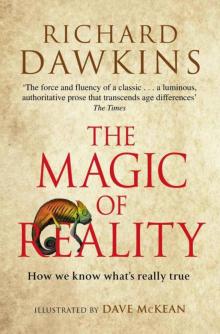 The Magic of Reality
The Magic of Reality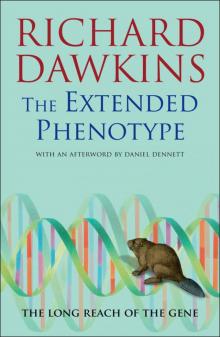 The Extended Phenotype
The Extended Phenotype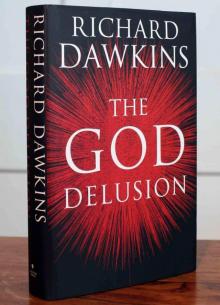 The God Delusion
The God Delusion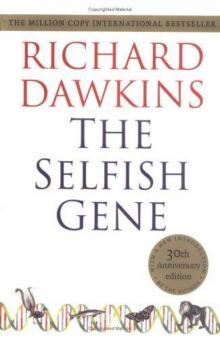 The Selfish Gene
The Selfish Gene The Blind Watchmaker
The Blind Watchmaker The Greatest Show on Earth
The Greatest Show on Earth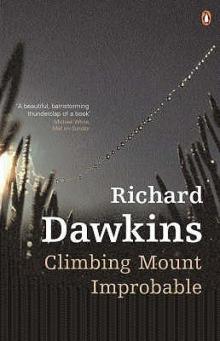 Climbing Mount Improbable
Climbing Mount Improbable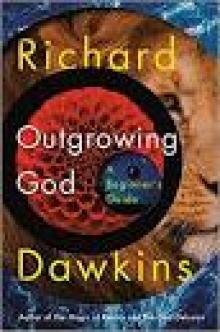 Outgrowing God
Outgrowing God Brief Candle in the Dark
Brief Candle in the Dark The Greatest Show on Earth: The Evidence for Evolution
The Greatest Show on Earth: The Evidence for Evolution Science in the Soul
Science in the Soul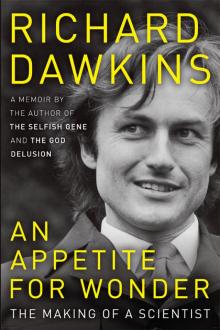 An Appetite for Wonder
An Appetite for Wonder